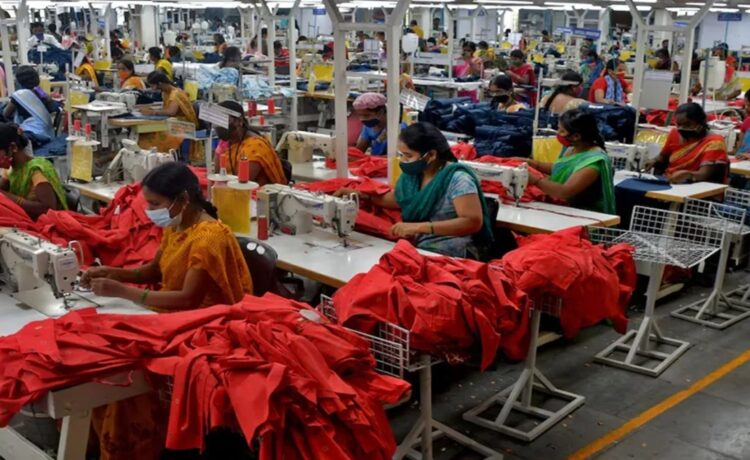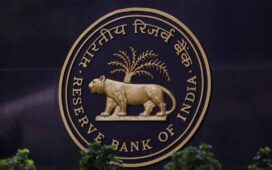India and the United Kingdom have reached a landmark Free Trade Agreement (FTA) on May 6, 2025 after nearly three years of negotiation. With the agreement expected to come into effect in calendar year 2026 following legal formalities, the FTA promises to significantly boost trade volumes—particularly in the textiles and apparel sector—by eliminating tariffs on 99 per cent of Indian goods. While India’s textile exports to UK stood at $1.4 billion in CY2024, representing a 6.6 per cent share of textiles imported by the UK, a report by ICRA maintained that the export volumes to the UK is expected to double from their current levels in the next 5-6 years post implementation of the revised tariffs.
India is currently the 12th largest trading partner of the UK and stands at fifth position as far as apparel and home textiles imports are concerned. The US and the EU continue to be the major export markets for Indian apparel and home textiles exporters, accounting for nearly 61 per cent share in CY2024. While the UK’s share had remained stable at around 7-8 per cent over the past five years amidst flattish growth, the same is expected to reach 11-12 per cent by CY2027, reflecting a 11 per cent CAGR between CY2024 and CY2027.
During calendar year 2024, China was the biggest apparel and home textiles exporter to the UK with around 25 per cent share, followed by Bangladesh at 22 per cent, Turkey at 8 per cent share and Pakistan at 6.8 per cent. And now with the implementation of the FTA, with zero-duty access on apparels and home textiles exported, India would have a level playing field compared to the existing duty-free access nation status like Bangladesh, Vietnam, and Pakistan.
To bring things under perspective, currently, an 8-12 per cent duty is levied by the UK on apparels and home textiles imported from India. The removal of the existing import duties is anticipated to double India’s textile exports to the UK over the next five to six years, driving capacity expansion, employment generation, and increased earnings for Indian exporters.

New opportunities for textile industry
The elimination of import duties by the UK will significantly enhance the competitiveness of Indian apparel exporters. Manufacturing hubs like Tirupur, Surat, and Delhi-NCR are expected to see a boost in export activity. Additionally, the implementation of the FTA will support Indian home textile exporters in strengthening their footprint in the UK’s retail and commercial segments, including sectors such as hospitality and healthcare.
The FTA will make India an attractive destination for UK retail giants to source for cost-effective production and diverse product offerings. This shift will benefit Indian suppliers boosting their revenues and enhancing their reputation in the global apparel industry. This will also provide an opportunity for Indian apparel and home textiles exporters to expand their product offerings, including more value-added apparels, or technical textiles. Understanding the UK market and the consumer trends will also be an imperative, ICRA said while adding, “Lower tariffs on the UK-origin technical textiles and high-end fabrics will introduce advanced materials to India, thus enhancing India’s domestic capabilities.”
Per data collated by ICRA, in CY2024 and 2M CY2025, India’s apparel and home textiles exports to the UK witnessed around 6 per cent and 7 per cent YoY growth, respectively. “The conclusion of the UK-India FTA is expected to encourage capital investments in the apparel and home textile sector, apart from generating employment opportunities and better earnings for the exporters with changing product mix,” it said.
ICRA has pegged a growth of around 13 per cent CAGR for India’s textile exports to the UK over the next five years post this development. To meet the additional demand, the industry is also expected to invest in incremental capacities in the garmenting segment. On the other part of the value chain (namely spinning, fabric processing, etc.), the spend is likely to be relatively lower given the inherent over-capacity situation in the country.
Key events that led to UK-India FTA
Here is a timeline of events that took place before conclusion of UK-India FTA:
May 2021: Launch of Enhanced Trade Partnership between India and the UK.
Jan 2022: Start of Free Trade Agreement negotiations between India and the UK.
Jan 2022 to March 2024: A total of 14 rounds of negotiations were held between officials of the two countries. Discussions were put on hold from March 2024, due to the General Elections.
Feb 2025: Resumption of negotiations between India and the UK.
May 6, 2025: Announcement of conclusion of around three years of negotiations for FTA between the UK and India. The FTA is subject to legal and legislative vetting.
Growth outlook
To conclude, the growth outlook for Indian apparel and home textiles exporters is looking highly promising following the UK-India FTA, which is set to create a level playing field with key competitors like Bangladesh and Pakistan. With the elimination of import duties and simplified customs procedures, Indian exporters are expected to benefit from enhanced operational efficiencies and improved ease of doing business. Export volumes to the UK, ICRA said, are projected to double over the next five to six years. This surge in opportunities is expected to support margin expansion through higher economies of scale and more profitable orders. In order to meet the anticipated increase in demand, the industry is expected to ramp up investments in garmenting capacity, even as spending in other parts of the value chain may remain subdued due to existing overcapacity, ICRA said.






